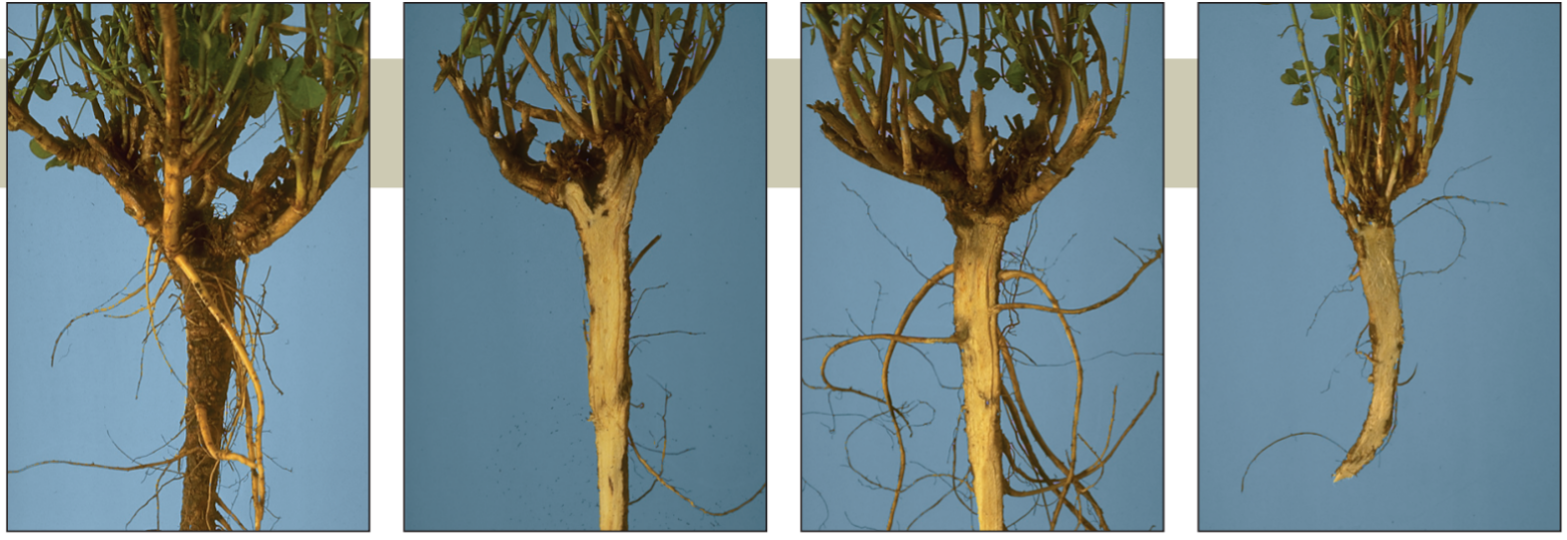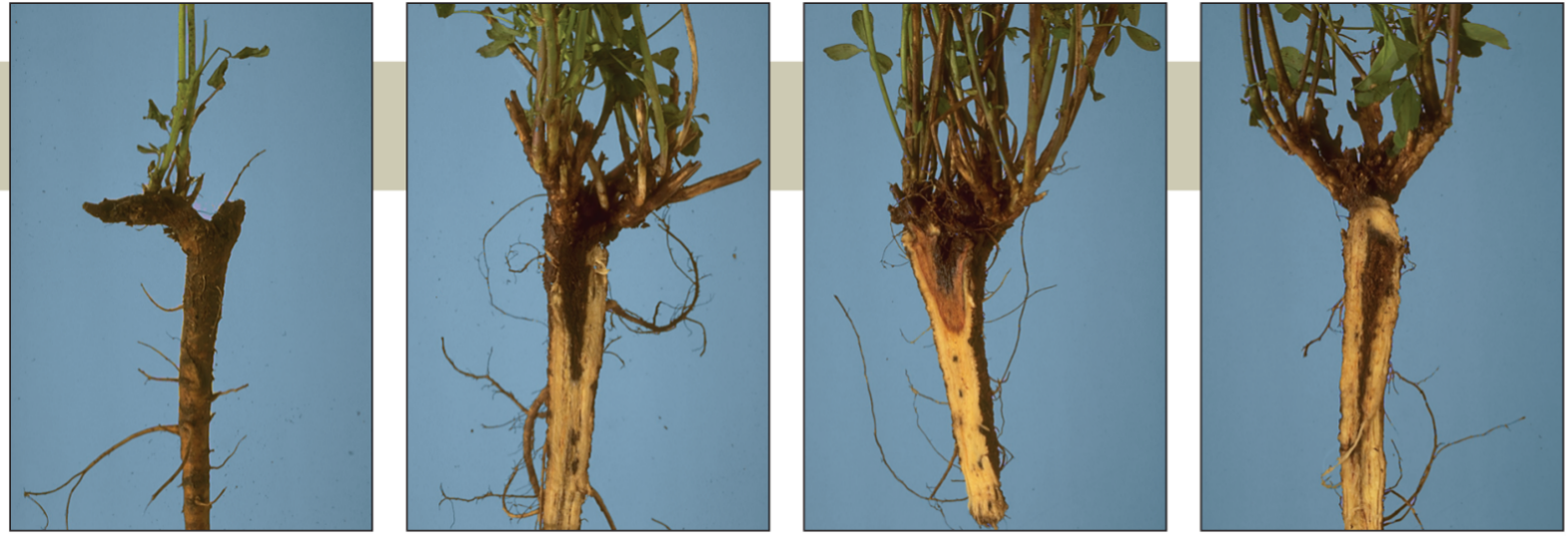Evaluating Alfalfa Stands for Winter Injury
Checklist
Step 1 – Root Damage and plant population
Early in the spring, walk your fields assessing plant population (stems) and health to determine the potential of the field. Evaluating for individual living, injured plants and thin spots. Stop about ten times to examine the roots and count the plants/sq ft. Dig up 5-6 plants from a square and cut the roots lengthwise to do your inspection.
 Excellent winter survival, keep the field
Excellent winter survival, keep the fieldObservations: Healthy white or creamy white roots, no particular smell, large crown and symmetrical shoots.

Not likely to survive winter, don’t keep the fieldObservations: 50% and more of the diameter of the root is brown in colour, a sign of rot, smell of decomposition, weak crown and asymmetry of shoots on the crown
Depending on the age of alfalfa, we should have the following number of plants/sq ft :
| New Seedling | 20 + plants/sq.ft. |
| Year 1 | 12 to 20 plants/sq.ft. |
| Year 2 | 8 to 12 plants/sq.ft. |
| Year 3 | 5 plants/sq.ft. |
Step 2 – Stem count (stem/sq ft)
If you are undecided about the condition of your field, you can count the stems/sq ft as soon as there’s enough growth (4 – 6 inches) to count.
Stem density is the best indicator of yield potential from a stand. For maximum yield, you need 55 stems/sq ft or more.
Step 3 – Keep the field or not
Preserve alfalfa, but low population
In the life of alfalfa, overseeding may only be possible after the first winter. From the 2nd year, overseeding will not be possible because of autotoxicity caused by established plants produce a toxin that prevents new alfalfa seedlings from germinating, surviving and/or growing within a 16 inch radius of older plants. Alfalfa overseeding rate is between 9 and 15 kg/ha (8-13 lbs/ac) depending on the damage. PRIDE Seeds offers high performance alfalfa suitable for all management styles. Talk it over with your PRIDE Seeds dealer.
For older alfalfa (2 years and +), red clover seedlings will be favoured when there is a need for forages on the farm.
Dead alfalfa
Assess your forage needs, if your other fields are in good shape and able to produce enough for your needs, why not rotate this field to corn? Otherwise a mixture of oat-pea for example could do the job.
Winning strategy this spring
If you have an older alfalfa stand and a thin stand, take the first cut which is the most productive then destroy the alfalfa to plant an early soybean variety - in areas of maturity that can allow it.
You will make two crops in the same season and take advantage of higher soybean market prices.

